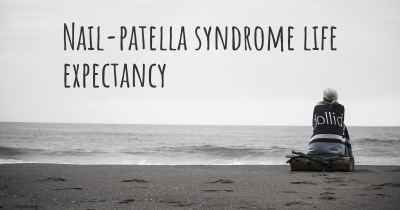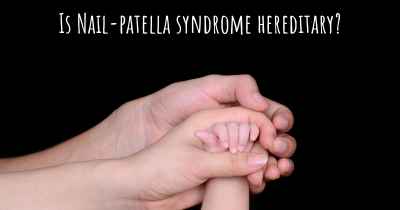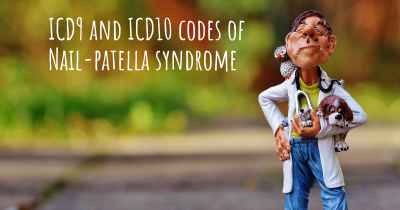What is the history of Nail-patella syndrome?
When was Nail-patella syndrome discovered? What is the story of this discovery? Was it coincidence or not?

Nail-patella syndrome, also known as NPS or hereditary onycho-osteodysplasia, is a rare genetic disorder that affects multiple parts of the body, including the nails, knees, elbows, and kidneys. It is an autosomal dominant condition, meaning that an affected individual has a 50% chance of passing the syndrome on to their children.
The history of Nail-patella syndrome dates back to the early 20th century when it was first described by two independent researchers. In 1907, a Swiss physician named Friedrich Daniel von Recklinghausen reported a case of a patient with abnormal nails and skeletal abnormalities. He named the condition "onycho-osteodysplasia." Around the same time, a British physician named Frederick A. Cook described a similar syndrome in a family, focusing on the nail abnormalities. He named it "hereditary onycho-osteodysplasia."
Over the years, more cases of Nail-patella syndrome were reported, and researchers began to recognize the distinct clinical features associated with the condition. In the 1960s, genetic studies revealed that Nail-patella syndrome followed an autosomal dominant inheritance pattern, which means that a single copy of the mutated gene is sufficient to cause the disorder.
The genetic basis of Nail-patella syndrome was discovered in the 1990s. Researchers identified mutations in the LMX1B gene as the underlying cause of the syndrome. The LMX1B gene provides instructions for producing a protein that plays a crucial role in the development of various tissues and organs, including the nails, bones, and kidneys.
Individuals with Nail-patella syndrome exhibit a range of characteristic features. Abnormalities of the nails are one of the hallmark signs of the syndrome. The nails may be absent, underdeveloped, or have a triangular shape. Additionally, they may have ridges, pitting, or a spoon-like appearance.
Skeletal abnormalities are another prominent feature of Nail-patella syndrome. The kneecaps (patellae) are often small, irregularly shaped, or dislocated. This can lead to knee pain and instability. Elbow abnormalities, such as limited range of motion or dislocation, are also common. Some individuals may have skeletal abnormalities in other parts of the body, including the hips, spine, and fingers.
Kidney involvement is a significant aspect of Nail-patella syndrome. Approximately 40-60% of individuals with the syndrome develop kidney abnormalities, which can range from mild to severe. These abnormalities may include proteinuria (excessive protein in the urine), hematuria (blood in the urine), or even kidney failure. Regular monitoring of kidney function is essential for individuals with Nail-patella syndrome.
While the clinical features of Nail-patella syndrome are well-documented, the exact mechanisms by which LMX1B gene mutations lead to these abnormalities are still being studied. Researchers believe that the LMX1B protein is involved in the regulation of other genes during embryonic development, and disruptions in this process can result in the characteristic features of the syndrome.
As with many genetic disorders, there is currently no cure for Nail-patella syndrome. Treatment primarily focuses on managing the symptoms and associated complications. For example, physical therapy and assistive devices may be used to improve mobility and stability in individuals with skeletal abnormalities. Regular monitoring of kidney function and blood pressure is crucial to detect and manage any kidney-related issues.
In conclusion, Nail-patella syndrome is a rare genetic disorder that affects various parts of the body, including the nails, knees, elbows, and kidneys. It was first described in the early 20th century and is caused by mutations in the LMX1B gene. The syndrome is characterized by nail abnormalities, skeletal abnormalities, and kidney involvement. While there is no cure for Nail-patella syndrome, appropriate management and regular monitoring can help individuals lead fulfilling lives.








